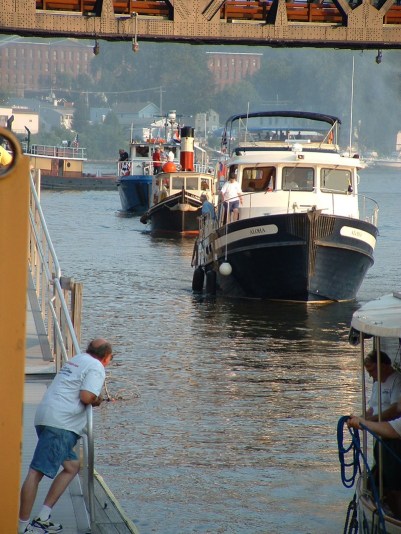Tugboats have been an indispensable part of maritime transportation for nearly 200 years. They maneuver larger watercraft in tight areas, and tow unpowered vessels from port to port. Tugs were invented in the 1810s, shortly after steam-power was successfully applied to watercraft. During the 1800s on the Hudson River and Lake Champlain, old stripped-down side-wheelers and propeller-driven towboats were used to move ever-increasing numbers of watercraft, especially canal boats.
Within the Champlain Canal, teams of mules and horses were the standard towing method for the canal boats until the early 1900s, when tugboat lines became more common in the canals. The normal tow for a tug was four canal boats in line. The tug was attached to the first coupled pair of canal boats or double header by a long towing or hawser. The first double header was separated from the second by a 150-foot long towline. A tug towing two double headers (four canal boats) through the Champlain Canal took about five days, working 15 to 16 hours per day, to travel the 62 miles from Waterford to Whitehall. The line and trip teams (animals) generally made better time than the tugs, especially going upstream. the tug captains seldom used their steam whistles to notify a locktender of their arrival because they traveled at such a slow speed that the locktender usually saw them and had the lock ready.
Today, tugboats are still a major element in the maritime transportation system, providing the muscle to keep commerce moving. On the Hudson River and Erie Canal, many tugs are still in operation. Visit the Tugboat Roundup’s website to learn more about hard-working tugs like Urger, Cheyenne, Frances Turecamo, and many more.

Tugboat Parade at the Waterford Tugboat Roundup in 2006
